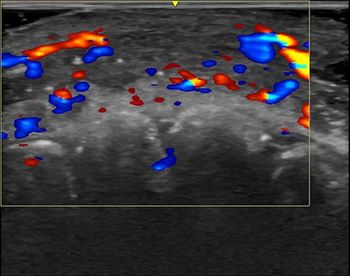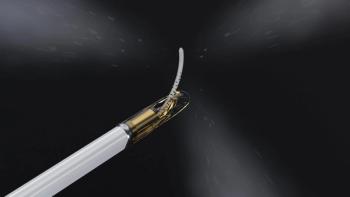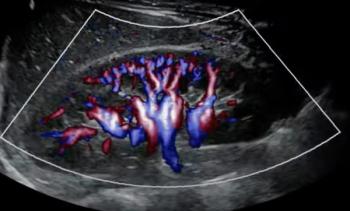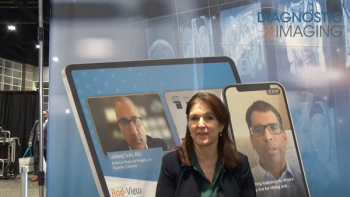
ADAC joins digital wave at RSNA show with Epic detectors
Vendor also unveils MacroVision softwareThe trickle of nuclear medicine vendors with digital gamma cameradetectors became a flood at this month's Radiological Societyof North America meeting. Several vendors unveiled developmentsin digital
Vendor also unveils MacroVision software
The trickle of nuclear medicine vendors with digital gamma cameradetectors became a flood at this month's Radiological Societyof North America meeting. Several vendors unveiled developmentsin digital detector technology, including Siemens, Sopha Medicaland market leader ADAC Medical Systems.
ADAC, of Milpitas, CA, began delivering its Epic digital detectorsimmediately after the RSNA meeting. The detectors will be shippedon all ADAC's rectangular-head gamma cameras, including the single-headand dual-head Genesys models and adjustable dual-head Vertex,according to Ian Farmer, director of nuclear medicine marketing.ADAC will no longer offer analog detectors on rectangular-headcameras, Farmer said. ADAC cameras in the field are not retrofittableto digital.
Epic uses a non-Anger method of digitization, in which analogsignals are converted to digital immediately after each photomultipliertube, Farmer said. The vendor compares its approach to non-Angerdigital gamma cameras manufactured by Summit Nuclear and ParkMedical.
Going digital has enabled ADAC to double the count rate ofits detectors, which are now capable of 200,000 counts per secondat the 20% energy window. Epic detectors also have improved resolution,linearity, uniformity and energy resolution.
Besides improving camera performance, digital detectors willallow ADAC customers to make upgrades in the future through softwareenhancements rather than hardware changes. Epic's digital technologyalso enables the development of remote servicing and diagnosticscapabilities. ADAC has boosted the list price of Epic gamma camerasslightly to account for the new technology.
In addition to digital, ADAC unveiled its new MacroVision programmingenvironment for developing nuclear medicine applications and protocols.Due to its object-oriented design, MacroVision expands the numberof gamma camera users who can develop new applications withoutgoing through the time-intensive process of writing computer code,according to Farmer.
Finally, ADAC displayed its work in non-uniform attenuationcorrection with Vantage, an investigational device that uses twoline sources of radiation mounted on Vertex with the detectorsin the 90_ position (SCAN 11/23/94). Because of the 90_ configurationand ADAC's narrow-beam line-source collimation, Vertex with Vantagecan complete cardiac protocols in 10 minutes versus 18 to 20 minuteson a triple-head camera using attenuation correction, accordingto Farmer.
ADAC hopes its technological advancements will help it seizeadditional market share, which stood at 34.5% at the end of September,according to the most recent National Electrical ManufacturersAssociation survey. The dollar sales of ADAC's Vertex camera alonenow exceed sales of the entire nuclear medicine lines of eitherSiemens or GE, according to Farmer.
"We can offer attenuation correction and digital detectorsin the future, and no other vendor can offer this," Farmersaid. "It will cause ADAC to grow its market share so morecustomers will want to buy ADAC products versus those of othervendors."
Newsletter
Stay at the forefront of radiology with the Diagnostic Imaging newsletter, delivering the latest news, clinical insights, and imaging advancements for today’s radiologists.




























